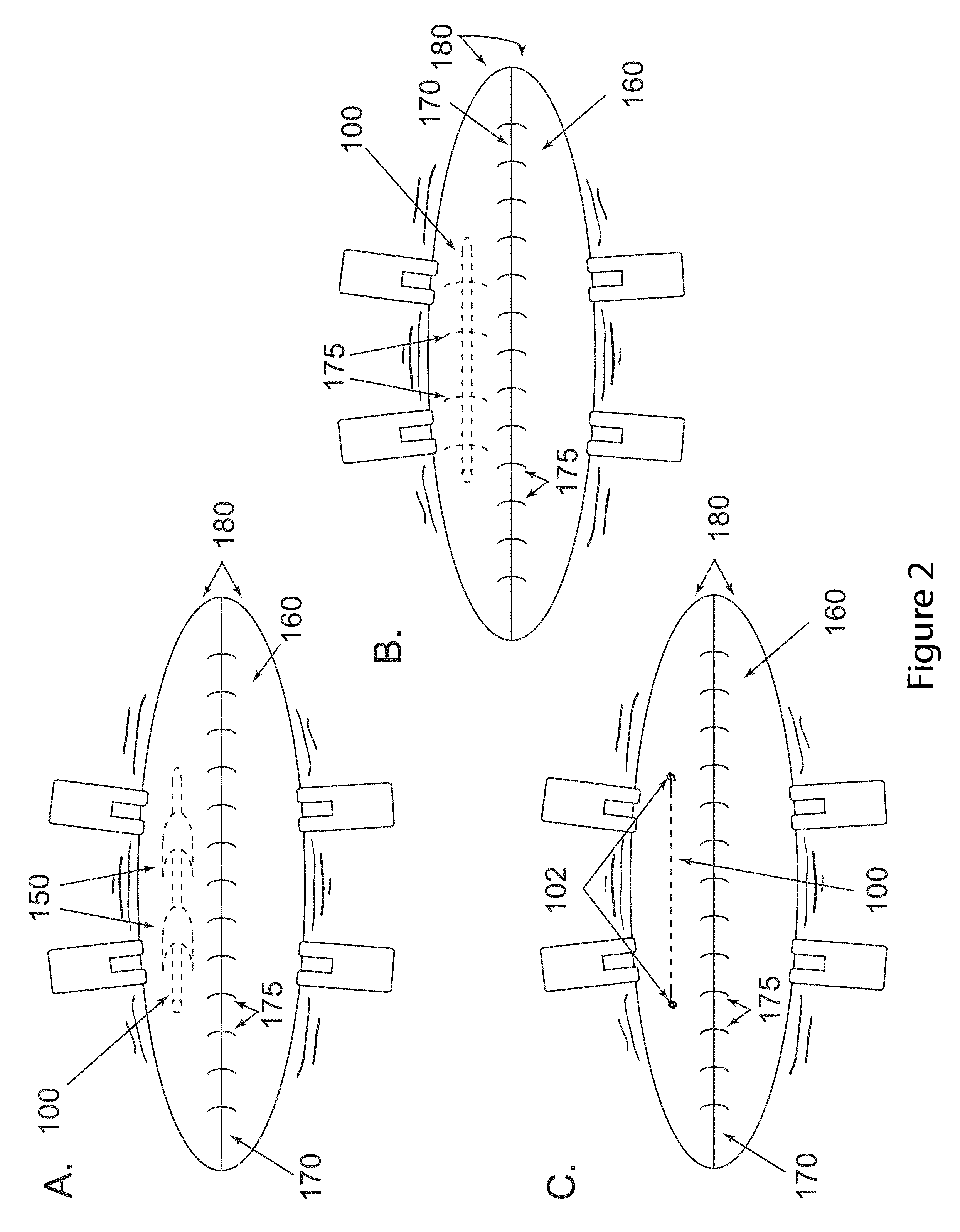Implants for postoperative pain
a technology for implants and postoperative pain, applied in the direction of prosthesis, organic active ingredients, peptide/protein ingredients, etc., can solve the problems of adverse drug-drug interactions, difficult treatment, and affecting the recovery and quality of life of patients, so as to relieve or prevent pain
- Summary
- Abstract
- Description
- Claims
- Application Information
AI Technical Summary
Benefits of technology
Problems solved by technology
Method used
Image
Examples
example 1
AC33 and AC34 Yarns and Ropes for Sustained Release of Morphine Sulphate Pentahydrate
[0070]Morphine eluting implants were fabricated through a coaxial electrospinning process as described in Palasis utilizing a core and sheath needle (20 and 10 gauge respectively). The core solution contained a 12% weight 75:25 PLGA polymer with respect to an acetonitrile solvent. Morphine sulfate was added to the core solution at 40% weight with respect to the polymer and mixed with a high-shear centrifugal mixer for 1 minute at 2000 rpm. For AC33, the core and sheath needles extruded solution at 2 and 3 mL / hr respectively. For AC34, the core and sheath needles extruded solution at 0.8 and 3.5 mL / hr respectively. The sheath solution for both devices was an 8% weight 75:25 PLGA polymer with respect to a 1:1 (by vol) tetrahydrofuran / dimethylformamide (THF / DMF) solvent. Extruded solutions were electrospun onto two ground collectors spaced approximately 10 centimeters apart for one minute to create one...
example 2
AC54 Yarns and Ropes for Sustained Release of Morphine Sulphate Pentahydrate
[0071]Implants were fabricated through an electrospinning process in which drug loaded polymer fibers are collected and twisted around one another between a small gap in a 20% relative humidity atmosphere. The core solution contained a 12% weight 75:25 PLGA polymer with respect to an acetonitrile solvent. Morphine sulfate was added to the core solution at 40% weight with respect to the polymer and mixed with a high-shear centrifugal mixer for 1 minute at 2000 rpm. The sheath solution consisted of a 14.7 wt % blend of 50:50 DL-PLGA and 75:25 PLGA polymer (1:1 by mass) dissolved in a 1:1 (by vol) THF:DMF solvent system. Sheath and core solution were delivered from their respective nozzles at flow rates of 3 and 2 ml / h, respectively. Upon electric field activation, the solutions were electrospun onto two grounded collectors spaced approximately 10 centimeters apart for one minute to create one yarn. This proces...
example 3
In Vitro Performance of Ropes of the invention
[0072]Morphine sulfate levels were measured during in vitro elution in PBS by using a reversed-phase high-performance liquid chromatographic method (RP-HPLC), and the cumulative release curves for AC33, AC34, and AC554 are shown in FIG. 15. The method utilizes a reverse phase C18 column (Symmetry C18, 5.0 um, 4.6x150 mm, Waters, Milford, Mass., USA). The HPLC system consists of a Waters Breeze Separator system with a 1525 isocratic pump, column heater, 2487 Dual Wavelength Absorbance Detector and a 717Plus Auto sampler. The mobile phase for isocratic elution consisted of a mixture of 610 / 375 / 15 v / v / v of water, acetonitrile, acetic acid with 80 mM ammonium acetic and 5 mM SDS. Under the optimum separation conditions, morphine eluted at 3.2 min. Detection was at 240 nm and 50 uL of sample was injected each time.
[0073]The release of morphine sulfate from AC33 ropes is specific to the way in which it was fabricated. A comparison of the relea...
PUM
| Property | Measurement | Unit |
|---|---|---|
| outer diameter | aaaaa | aaaaa |
| diameter | aaaaa | aaaaa |
| diameter | aaaaa | aaaaa |
Abstract
Description
Claims
Application Information
 Login to View More
Login to View More - R&D
- Intellectual Property
- Life Sciences
- Materials
- Tech Scout
- Unparalleled Data Quality
- Higher Quality Content
- 60% Fewer Hallucinations
Browse by: Latest US Patents, China's latest patents, Technical Efficacy Thesaurus, Application Domain, Technology Topic, Popular Technical Reports.
© 2025 PatSnap. All rights reserved.Legal|Privacy policy|Modern Slavery Act Transparency Statement|Sitemap|About US| Contact US: help@patsnap.com



